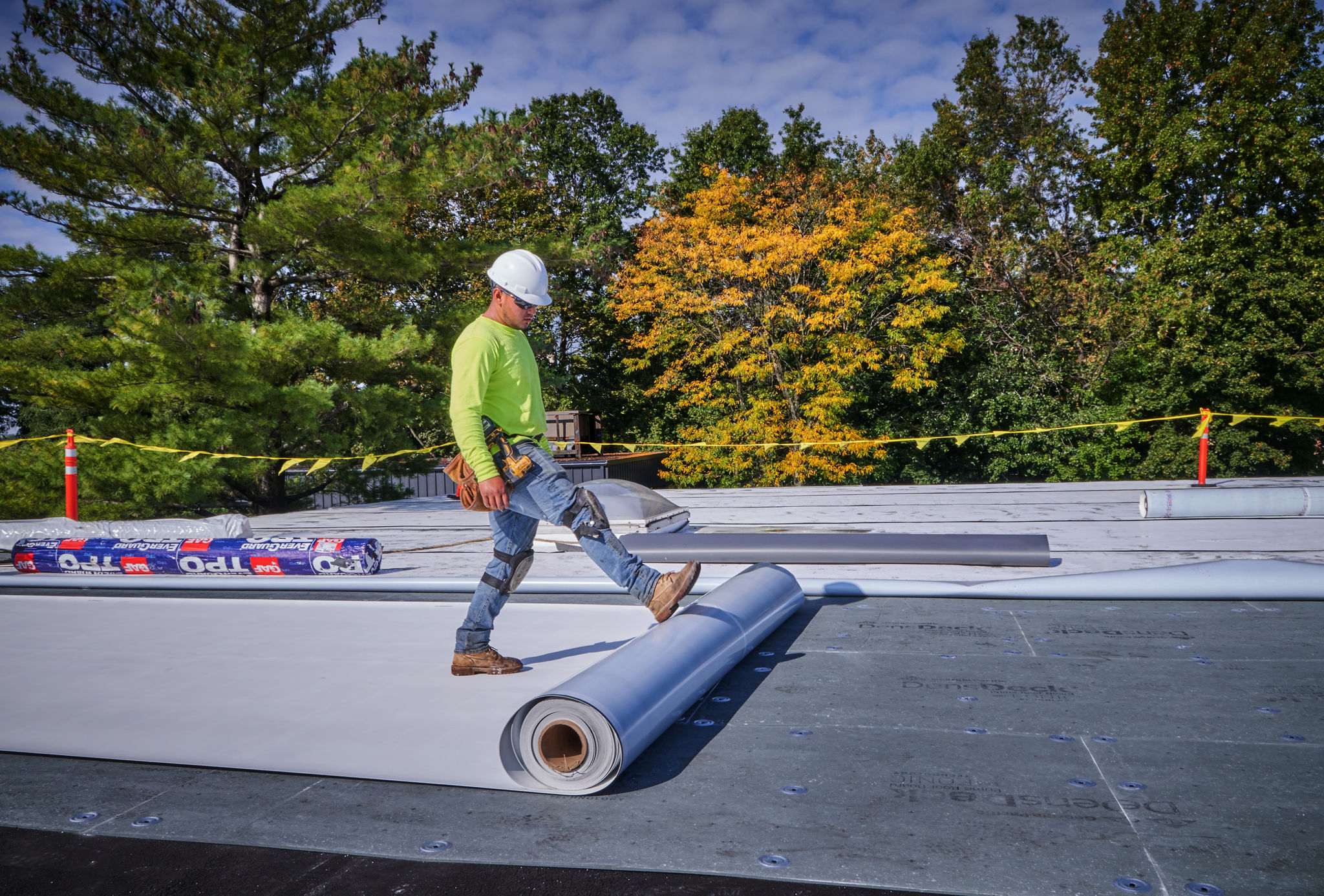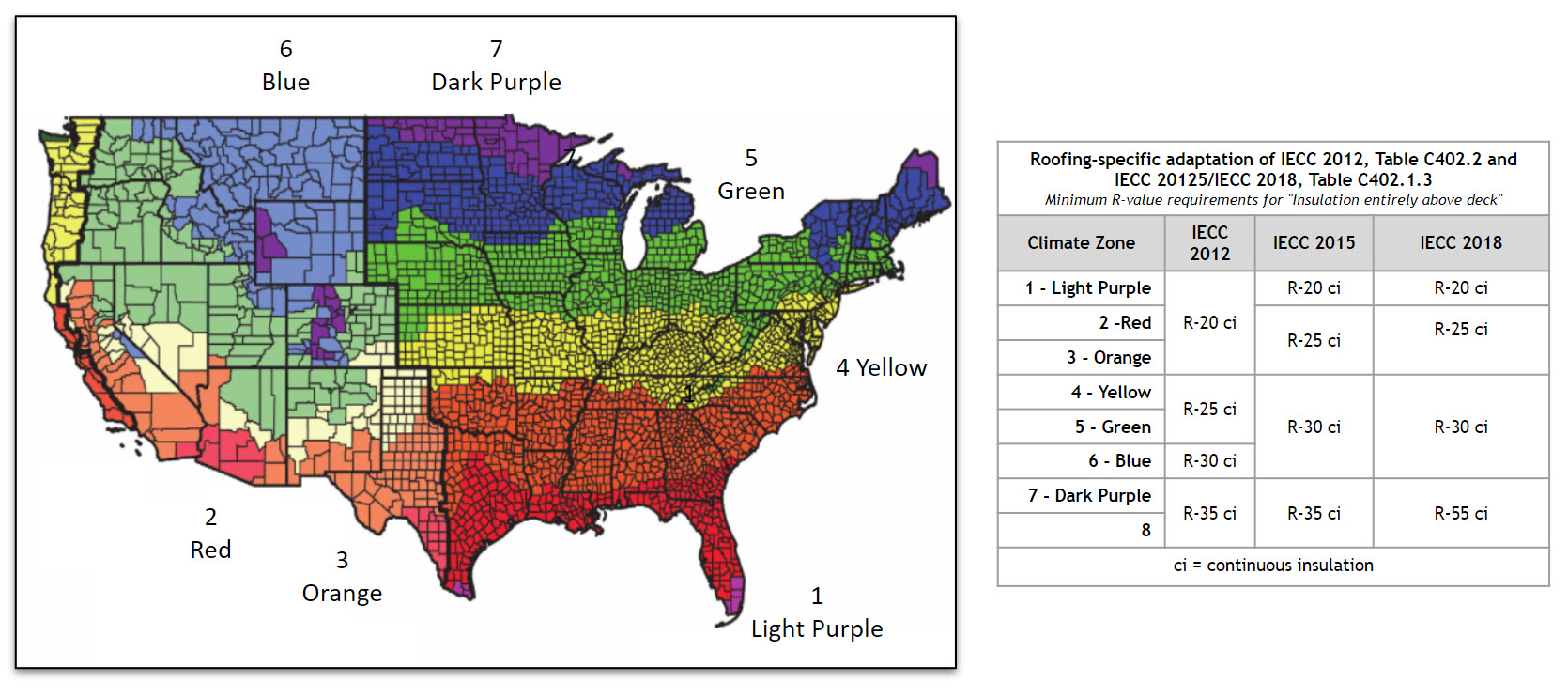Right Roof = Right Requirements + Right Materials + Right Place
Learning Objectives:
- Discuss code requirements for commercial roofs and highlight how wind and energy requirements influence roof design.
- Identify the basic components of low-slope roofing, including differentiating between insulation, coverboard, and membrane types.
- Delineate different attachment methods in roofing systems, with a particular emphasis on insulation and membrane attachment options.
- Apply a matrix of design parameters—including building type, rooftop use, climate, and building location—when making roof design decisions.
Credits:
While some attribute success to being at the right place at the right time, roofing success is more about thoughtful design and installation rather than happenstance. Roofing plays an extremely important role in protecting the building from the elements, impacting energy efficiency, and contributing to the resilience goals of a building. Selection of every roofing assembly component, from the insulation to the membrane, including the attachment method can impact both the service life and the performance of the roof assembly. A successful roof design, which incorporates the building’s design parameters, will withstand the test of time.

All Images courtesy GAF I Siplast
Setting the Right Requirements—The Code
Codes provide the minimum requirements for construction. Code represents a baseline for design and has few regulatory provisions that focus on resilience. Designers can, and often should, design beyond the minimum code requirements to improve the durability and longevity of their buildings. The code requirements come from the International Building Code® (IBC) and the International Energy Conservation Code® (IECC), and are either performance or prescriptive requirements. The code also references specific key standards from documents issued by organizations including ASTM International (ASTM), ASHRAE (The American Society of Heating, Refrigerating and Air-Conditioning Engineers), and The American Society of Civil Engineers (ASCE).
Building Code Prescriptive Requirements
Chapter 15 of the IBC provides minimum requirements for the design and construction of roof assemblies and rooftop structures. The chapter addresses Roof Drainage (1502), Weather Protection (1503); Requirements for Roof Coverings (1507); Flashing (1503.2); Coping (1503.3); Wind Resistance of Roofs (1504.1, ASCE 7); and Edge Securement, Low-slope Roofs (1504.5). Such sections include requirements for emergency overflow drainage, gutter securement, and the ability of roofs to withstand wind events, foot traffic, and fires. While these topics may seem obvious to include, roof coverings must be designed and installed in accordance with this code and the manufacturer’s approved instructions. First, code considerations must be taken into account during roofing materials selection and installation. Then, they can be enhanced for each unique roof design.
Energy Code—Commercial Requirements
The IECC recognizes the roof’s role in energy performance. Energy codes apply to roofs because the R-value established in the roof assembly enables containment of conditioned air inside the building. The roof's contribution towards maintaining the enclosure and keeping the interior environment separate from the exterior means that heating, ventilation, and air conditioning (HVAC) systems do not have to work as hard, resulting in reduced energy consumption.
Under IBC Chapter 13, Energy Efficiency, “Buildings shall be designed and constructed in accordance with the International Energy Conservation Code - 1301.1.1.” Designs can comply with either the requirements of ANSI/ASHRAE/IESNA 90.1 or the requirements of the IECC Commercial Provisions, which apply to all buildings except for residential buildings 3 stories or less in height.
The version of the Code is adopted at the state level; the most recent version is dated 2021, where significant updates were made in regards to the air barrier requirements. Since 2010, the IECC states that a continuous air barrier must be provided throughout the building thermal envelope (2021 IECC §C402.5.1. Air Barriers). The air barrier is permitted to be located on the inside or outside of the building envelope, located within the assemblies composing the envelope, or any combination thereof. The air barrier selected needs to comply with Sections C402.5.1.1 for materials and C402.5.1.2 for assemblies. This section is important as the roof air barrier, whether a dedicated air barrier or the roofing membrane as the air barrier, is required to be continuous across the roof as well as continuously transitioned to the exterior wall air barrier. This requirement is critical to understand when detailing the roof at both roof penetrations (discontinuities) and at the roof to exterior wall interface.
The energy code additionally sets requirements for thermal performance, including a minimum R-value for the roof. This R-value is based on climate zone and geographic location (IECC C301.1 and 90.1 Annex 1). It should be noted that the R-values in the Code are denoted as minimum R-values. The unique building type should be taken into account when designing the R-value for the roof. Owners selecting to achieve higher energy savings, or specialty buildings such as cold storage, frequently require more insulation than required by the Code.

IECC Map with minimum R-value requirements.
Guidelines for installation, as provided by the codes, are also critical to achieving predicted energy efficiency. Starting in 2018, the IECC Section C402.2.1 requires two layers of insulation at the roof and provides that this installation should be staggered and offset during installation, to prevent airflow between the joints.
Wind Design
Determining the wind loads affecting a roof system is based on requirements contained in the IBC and the American Society of Civil Engineers (ASCE) 7, Minimum Design Loads and Associated Criteria for Buildings and Other Structures.
Wind mapping tools, such as the ASCE 7 Hazard Tool, helps select a location-based wind speed (in miles per hour, mph) that is used to determine the loads that will be acting on the roof system.
Recent building codes have become more stringent in determining design wind loads for roof systems. The requirements are based on historical data that has been collected over decades. Variables, such as the local building code and building dimensions, building use, occupancy, exposure, and type, are also used in various equations to determine loads acting on a roofing system. The wind speed, in miles per hour, is then converted into a wind uplift pressure, in pounds per square foot (psf). It is these wind uplift pressures that the roof assemblies must be able to withstand.
The main objective is to have the capacity of the roof greater than the projected wind loads. Wind uplift pressures will vary for each unique building and therefore, calculating the wind pressures for each roof is imperative.
Please see below for further resources and information on Wind Design:
Wind Design and (the new!) ASCE 7-16
Prevailing Winds and Prevailing Codes, A Summary of Roof Related ASCE 7-22 Changes
Establishing the Right Design Parameters
Design parameters provide the starting point to determine which roofing assembly to install on a property. It is these requirements that shape the building design, including building envelope and structural considerations. Owner requirements, including building type and use will dictate some design parameters for the roof, with the code, including regional and local climate factors setting the remainder of the requirements. Selection of the roofing assembly will influence service life and energy savings over the life of the roof. Selecting the right roof ultimately means mitigating risk and ensuring that the roof will perform as intended.
Building Use
The building use, including rooftop use, may have the most impact on a building design. The interior spaces will influence the building shape, size, and interior conditions, all of which influence the roof design. The roof will need to incorporate desired energy considerations, which influences the amount of insulation. Airflow, vapor drive, and moisture potential, will each influence the roof assembly as consideration of a dedicated air or vapor retarder may be required based on interior conditions.
While these are not all roof design considerations, these are some to consider or some questions to be asking:
Are there requirements for impact resistance?
- Consider an appropriate coverboard based on the type of impact resistance required. Foot traffic may require a coverboard with less compressive strength whereas impact requirements for hail, such as very severe hail, will require a coverboard with more compressive strength. A thicker and more robust membrane will also provide impact resistance.
Is there a particular level of fire resistance required?
- Consideration may be given to a fire rated assembly.
Will there be exercise rooms or shower facilities that may increase the moisture level in the building?
- Consider a dedicated vapor retarder at the roof deck level to prevent moisture from entering the roof assembly.
Will enhanced chemical, or grease and oil resistance be required, such as from food processing or cooking operations?
- Consider a membrane that will be resistant to the chemicals, greases, or oils that may be expelled onto the roof. Membrane types will differ on their resistance to each type of chemical.











